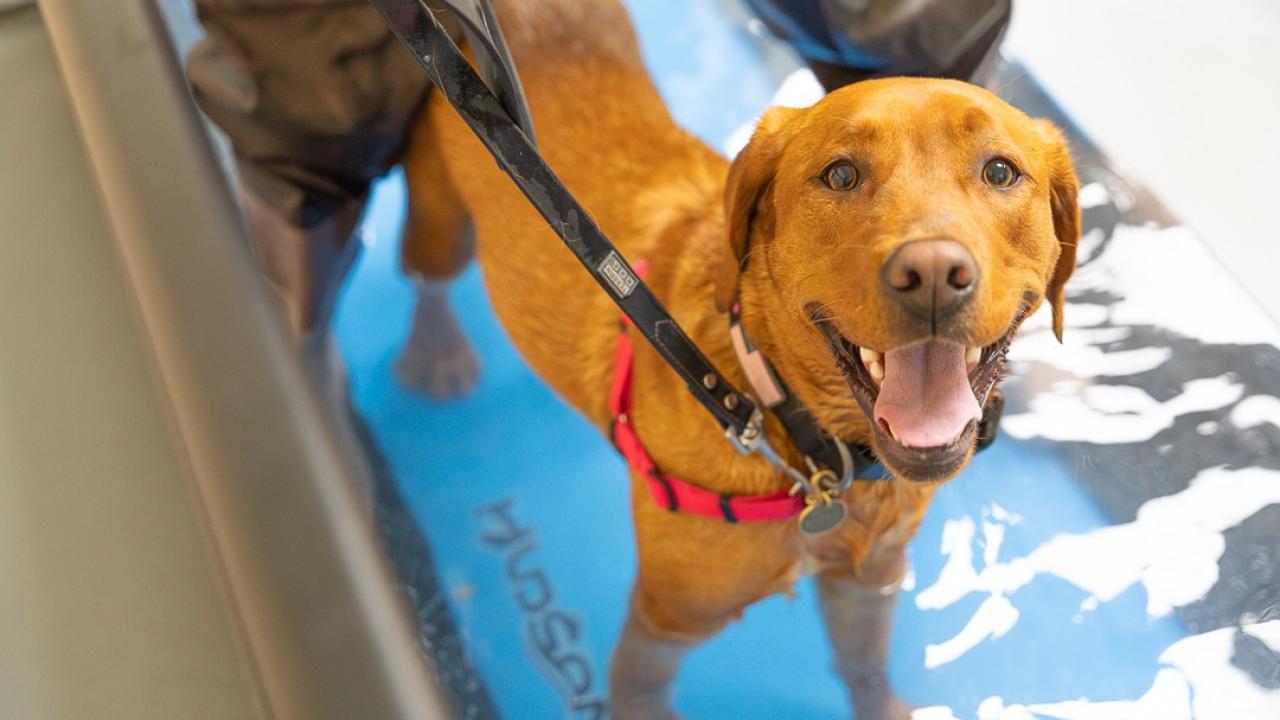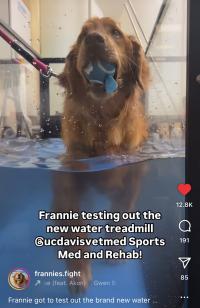
Sports Medicine and Rehabilitation Service Upgrades Underwater Treadmills

The UC Davis William R. Pritchard Veterinary Medical Teaching Hospital has acquired two new underwater treadmills for its small animal Sports Medicine and Rehabilitation Service. The treadmills, used daily to rehabilitate dogs recovering from injury and/or surgery, replace older treadmills that were in place at the hospital for more than 20 years.
Frannie, a golden retriever rescued by veterinary student Annika Bram, was one of the first patients to use the new treadmills. Severely obese when Bram adopted her, Frannie has dropped more than 65 pounds—from 125 to 59—since beginning her life-saving diet and exercise program.
Frannie and thousands of other dogs will now have more efficient workouts and rehabilitation sessions thanks to a generous gift by C.Y. and Jane Fong. The treadmills were part of a major gift of over $1.2 million by the Fongs to the School of Veterinary Medicine for hospital equipment, facilities, and the care of shelter animals. Their dogs, Dixie and Buffy, were patients at the UC Davis veterinary hospital.
To replace the treadmills, the hospital completely reformatted the sports medicine gymnasium which allowed for more space for rehabilitation exercises once the treadmills were in their new location. The technology of the new treadmills far exceeds the hospital’s previous ones, which were also donated, and will immediately provide more efficient rehabilitation workout experiences for both patient and care team.
“We’re so excited to present these new treadmills for our patients,” said Megan Loscar, RVT, small animal specialty service manager. “This will allow for more specialized rehabilitation programs unique to each patient’s needs.”
Advantages to the new treadmills:
• More varied speed options, including much slower lowest speed for smaller dogs
• Entrance to the treadmill/tank is at ground level for easier entry for lame dogs (previous treadmill was two steps up)
• Indoor water tanks which provide nearly instantaneous water temperature control (previous tanks were outdoors which required starting the system several hours before an appointment if outside temperatures were too hot or too cold)
• Faster tank filling/draining
• Monitoring screens can be positioned on any corner of the tank for easier technician/veterinarian access
• Incline option for more advanced rehabilitation sessions
• Wider tank for better technician/veterinarian access
The Sports Medicine and Rehabilitation Service at UC Davis facilitates more than 3,000 small animal in- and out-patient appointments per year.
# # #
